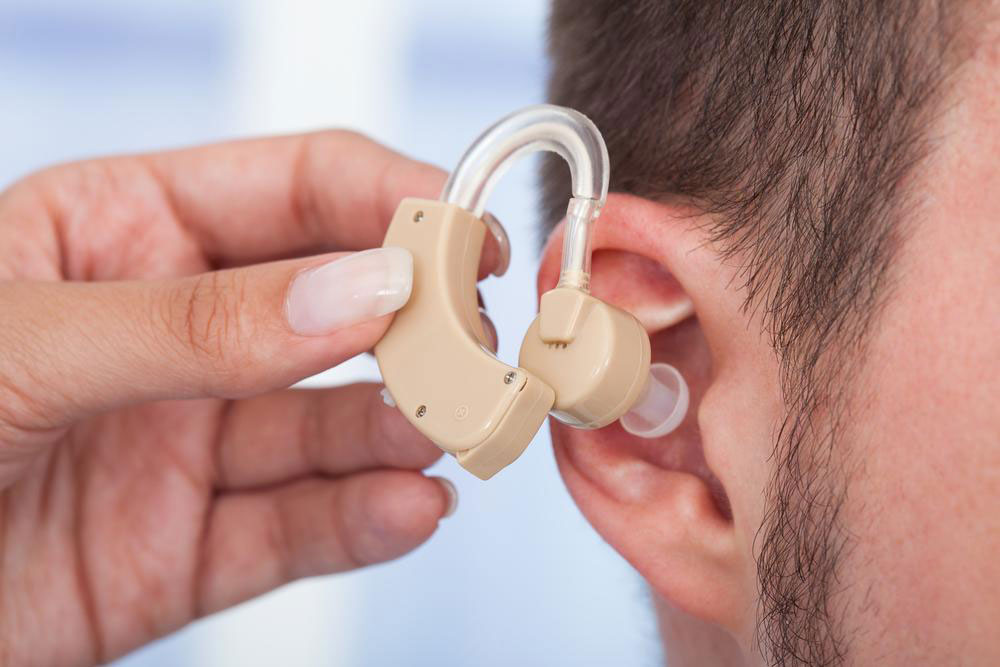The three main components of a hearing aid are the microphone to pick the sound, the amplifier to make the sound loud, and the receiver that sends the sound into the ear canal. Also, in the modern digital hearing aids, the microphone transmits the sound to a computer chip to adjust the volume and amplifies the sound frequencies that help in improving one’s hearing.
There are different types of hearing aids available, below are the three popular types of hearing aids.
Traditional behind-the-ear (BTE) hearing aid
In this type of hearing aid, all the electronic components are placed in a plastic case and are worn behind the ear.
The tube that connects the case to the receiver sends the sound to the ear. Also, a custom earmold is worn in the canal of the ear. The advantage of using a traditional behind-the-ear (BTE) hearing aid is that it provides amazing and flexible features like high- and low-frequency amplification, which makes it a great choice for people with severe hearing loss. Also, the controls of these traditional models are easy to manage and the telecoil mode gets selected and used easily. Additionally, the custom-made earmold is easy to clean.
Mini-behind-the-ear (mBTE) hearing aid
This type of hearing aid goes by different names like receiver-in-the-canal (RIC), canal receiver technology (CRT), receiver-in-the-ear (RITE), and receiver-in-the-aid (RITA).
The receiver is the speaker that transmits the sounds to the inner ear that is inside the ear canal. It attaches to the ear through a thin wire and a custom-made earmold. The custom-made earmold is a made of a soft material that is made to fit snugly in the ear to channel the sound into the ear. The mini-behind-the-ear (mBTE) hearing aid is quite comfortable and barely visible. Also, larger versions of the same are available that are easy to insert. However, the moisture and wax buildup may limit the life of the receiver.
In-the-canal (IIC) hearing aid
These hearing aids are barely visible and it does not feel plugged-up as the hearing aid sits deep in the canal. Larger units of these types of hearing aids include directional microphones. The major issue people face while using this hearing aid is discomfort. Also, the battery tends to be small, making the battery life relatively short. These models are prone to moisture and the receiver may face clogging because of earwax.
Disclaimer:The content provided on our blog site traverses numerous categories, offering readers valuable and practical information. Readers can use the editorial team’s research and data to gain more insights into their topics of interest. However, they are requested not to treat the articles as conclusive. The website team cannot be held responsible for differences in data or inaccuracies found across other platforms. Please also note that the site might also miss out on various schemes and offers available that the readers may find more beneficial than the ones we cover.


